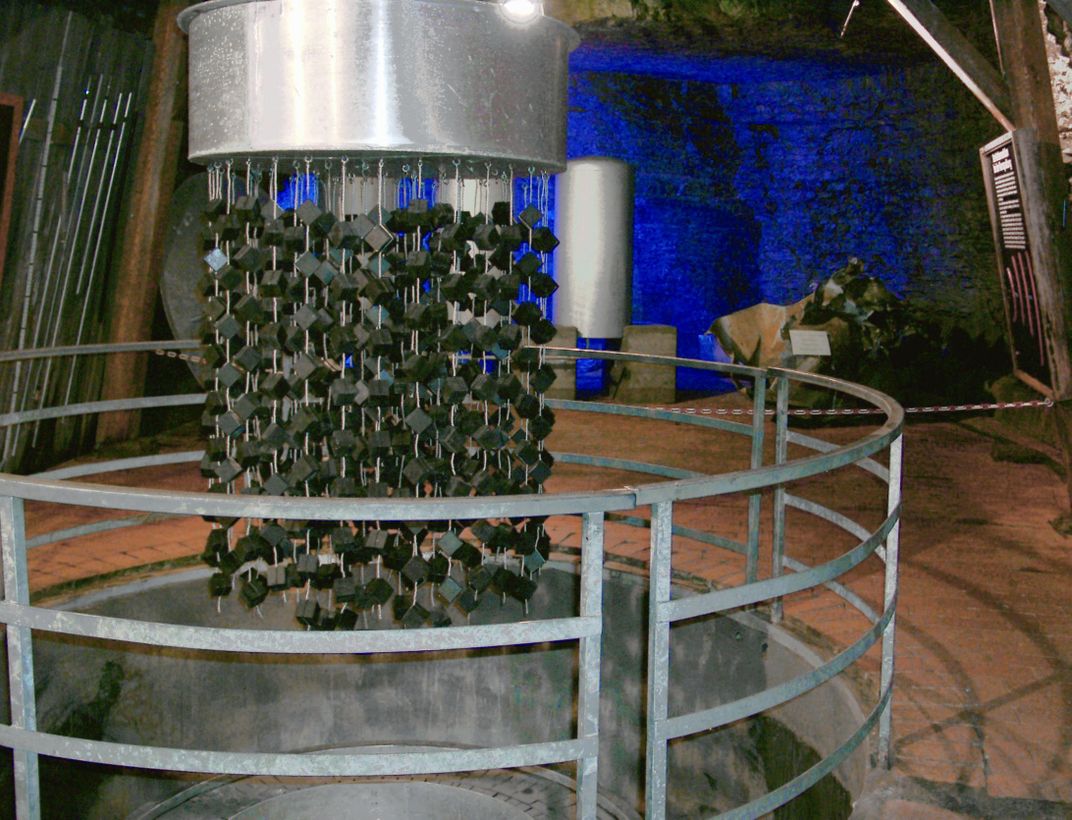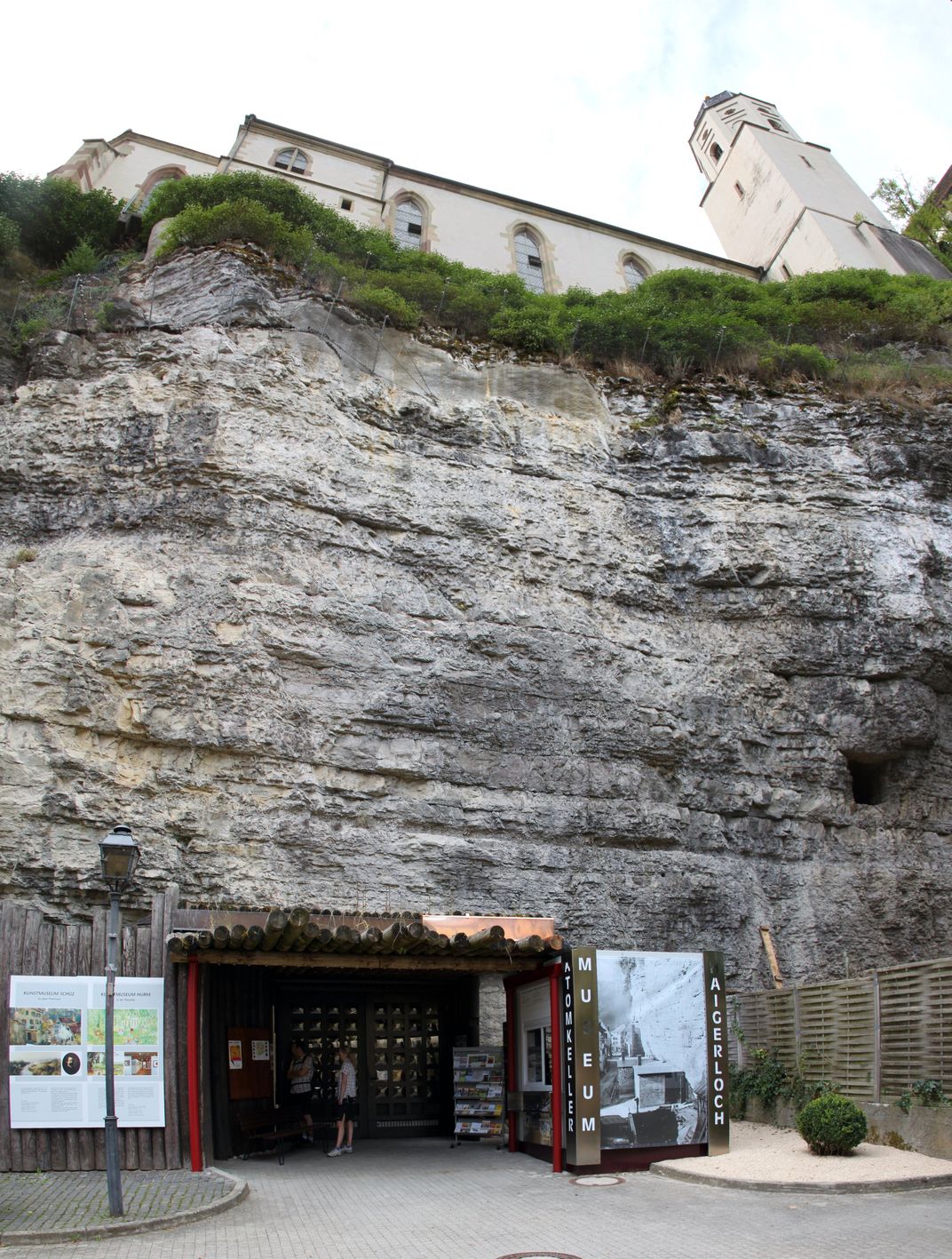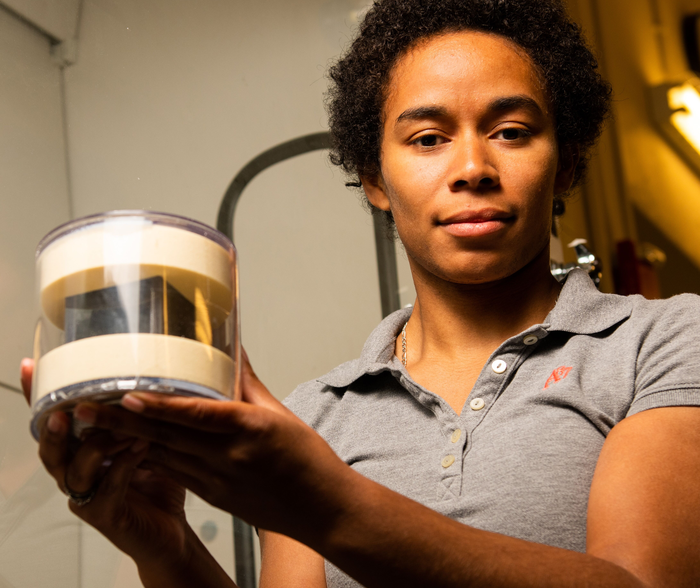Did the Nazis Use This Uranium Cube in Their Failed Nuclear Program?
New research may help the Pacific Northwest National Laboratory confirm the identity of a mysterious object in its collections
:focal(370x507:371x508)/https://tf-cmsv2-smithsonianmag-media.s3.amazonaws.com/filer/4d/a1/4da1ccfd-2eda-4929-a707-a5b9609d481d/uranium.jpeg)
Rumors about a two-inch-tall cube of uranium housed in the collections of Washington’s Pacific Northwest National Laboratory (PNNL) have persisted for years. As Caroline Anders reports for the Washington Post, employees have long suspected that this strange cube of shimmery material was one of hundreds used by Nazi scientists during their failed attempts to create atomic weapons during World War II.
No researcher has ever confirmed this particular cube’s history. But thanks to advanced nuclear forensics techniques, scientists at the Richland laboratory are closer than ever to figuring out the truth, reports Jennifer Ouellette for Ars Technica.
To confirm the theory, researchers Jon Schwantes and Brittany Robertson are relying on radiochrometric dating, a method that estimates the age of an object by assessing which decay products of uranium it contains.
Preliminary data suggests “the age of our cube is consistent with the age of the Nazi nuclear program,” Schwantes tells Vice’s Becky Ferreira. Records indicate that the cube was shipped to PNNL from the United States Department of Energy in the 1990s, but its provenance before then remains unclear.
As part of her PhD research, Robertson is attempting to match “signatures of rare-Earth elements” in the PNNL cube with samples from uranium mines, notes Vice. If the signatures correspond, she may be able to determine where the Nazis sourced their materials. Top candidates include mines in the Czech Republic and the Democratic Republic of Congo, which were both accessible to the Nazis during the war.
Schwantes and Robertson presented their findings at the fall meeting of the American Chemical Society last week.
In April 1945, members of the Allies’ top secret Alsos Mission, which sought to gather intelligence and quash the German nuclear research program, recovered 659 uranium cubes from a field near a Nazi laboratory in Haigerloch, Germany.
Hidden in a cave beneath a castle, the facility was run by physicist Werner Heisenberg. As Alex Lopatka and Andrew Grant reported for Physics Today in 2019, scientists working under Heinseberg had previously created a nuclear test reactor that relied on an “ominous … chandelier” of 664 individual uranium cubes, all strung together with aircraft cables.
Allied forces shipped the uranium cubes found at the site first to Paris and later to the U.S. But 400 or so remained unaccounted for, and today, the fate of the “vast majority” of the cubes remains unknown, per Physics Today. Nazi scientists may have smuggled some out as they fled the laboratory; others may have been destroyed in the U.S. or sold on the black market.
Had the Nazis succeeded in developing nuclear weapons, World War II could have ended very differently. But as it worked to foil the Nazis’ nuclear ambitions, the U.S. also rushed to develop powerful weapons of its own. Ultimately, the Manhattan Project succeeded in building two atomic bomb designs: one that relied on the nuclear fission of uranium and the other based on plutonium, per History.com.
In 1945, President Harry Truman and the U.S. military made the highly controversial decision to drop atomic bombs on the Japanese cities of Hiroshima and Nagasaki. The blasts killed an estimated 200,000 people and caused lingering injuries and radiation poisoning that plagued more than 650,000 survivors for decades to follow.
The PNNL cube, for its part, is currently being used to train border guards and other officials to recognize signs of illegal nuclear weapons smuggling.
“This cube, potentially coming from Nazi Germany’s nuclear program for the purpose of trying to produce plutonium for their weapons program, is now being used at PNNL for training purposes … in an attempt to make the world a safer place,” Schwantes tells the Post. “So it’s an interesting history.”
/https://tf-cmsv2-smithsonianmag-media.s3.amazonaws.com/accounts/headshot/nora.png)



/https://tf-cmsv2-smithsonianmag-media.s3.amazonaws.com/accounts/headshot/nora.png)